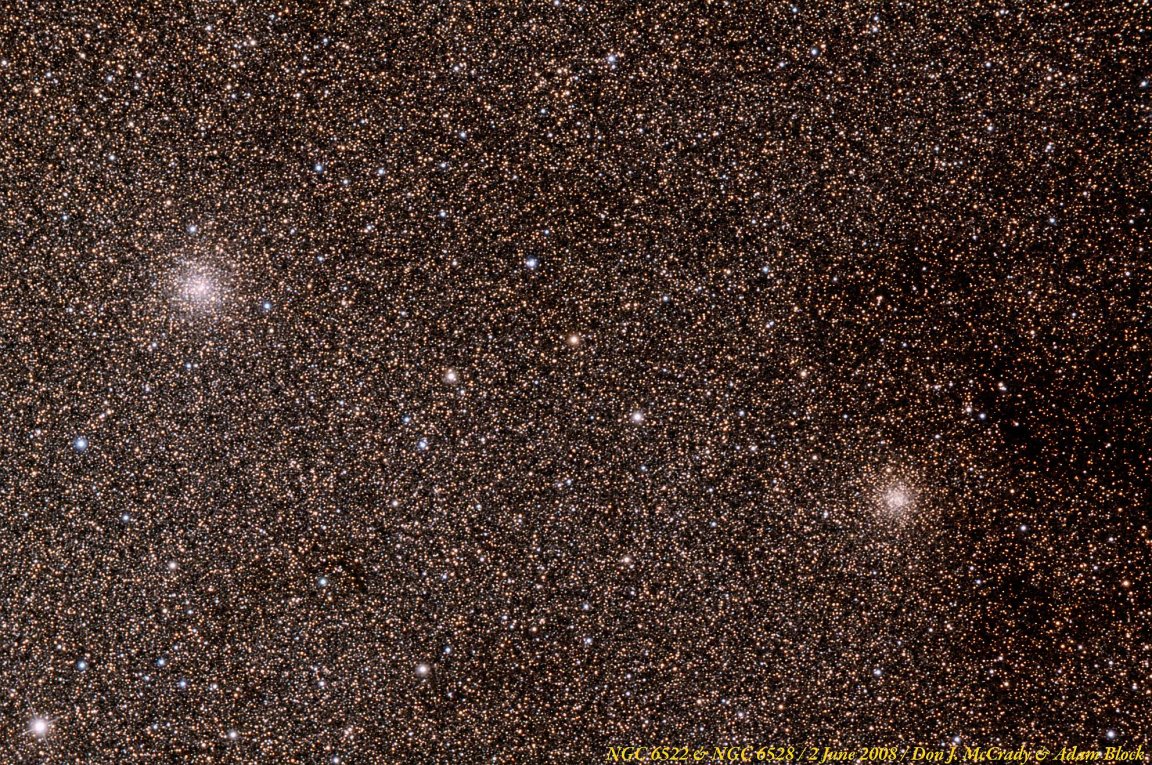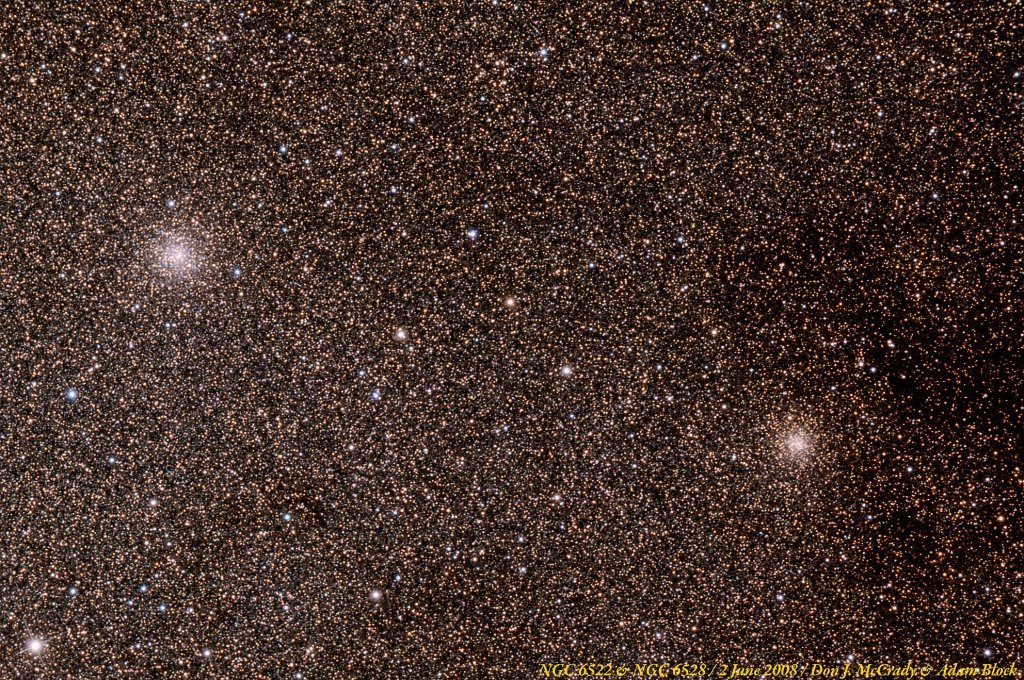

Have you ever heard of Baade’s Window? This is a region of sky with a particularly low density of interstellar dust as visible from Earth. Because of this low density, it provides a sort of window into the Milky Way’s galactic center, allowing scientists to study the core of our galaxy without normal interference from the interstellar dust that normally obscures our view. Baade’s window is about 1800 light-years from the heart of the Milky Way and can be found near Sagittarius. This region is also home to several globular clusters, most notably, NGCs 6522 and 6528. Baade’s window itself covers 1 degree of sky, or two full moons.
Back in the mid-1940s, Walter Baade discovered this patch in the sky while looking for the Milky Way’s center. Until this discovery, we knew very little about the structure of the Milky Way, and didn’t have a clue where its center was. Fortunately, Baade recognized the importance of this discovery.
Because of the clarity of our sight-line to Baade’s Window, scientists use it to study and measure the stars in the central bulge. Overall, there are six ‘windows’ where people from Earth can see the central bulge. Baade’s window is the clearest of the six. As an added bonus, scientists have also discovered planets orbiting around stars in the central bulge by using a process known as microlensing. However, due to radiation from the galactic center, these planets would not be habitable for our type of life.